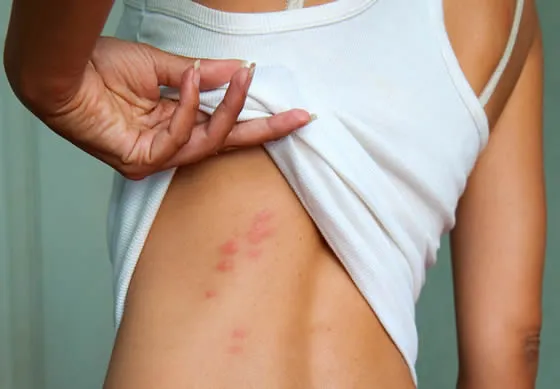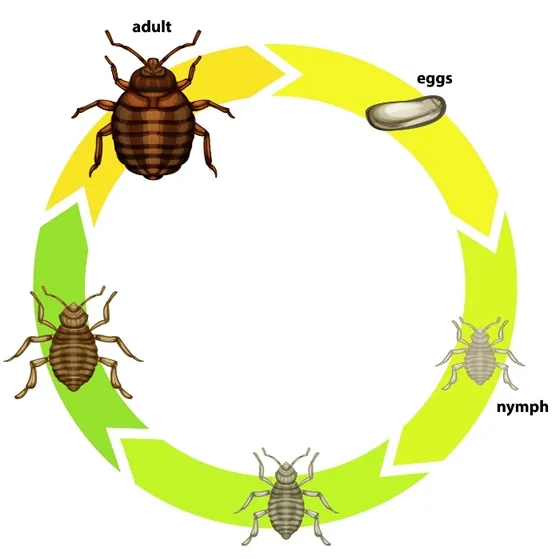
These creepy little crawlies can be fairly difficult to eradicate once they have settled in. The best way to prevent bed bugs is first to understand them and learn how they initially get into your home. After returning from a vacation, place all clothes on a hot wash and then dry on the hottest setting. Be sure to scrub your luggage down with a stiff brush, focusing on the zips and crevices then vacuum immediately. Repeat these processes with your bed linen and mattresses, however if you’re in need of a full extermination this usually requires the use of chemicals, which can pose health risks if the wrong types are used within living quarters.
Bed bugs are small insects that feed on the blood of people and animals at night. That’s right, they are nocturnal creatures and so during the day they hide in dry, dark places making it that much harder to find them.
The most common ways for bed bugs to get into your home is usually within your luggage, after returning from a trip or after bringing in second hand furniture, bedding and clothing.
To confirm your suspicions, the following signs should help you detect the presence of bed bugs -

Bed bug bites: The most obvious sign is that little clusters of bites pop up on your skin either overnight, or in some cases after a couple of days. Painless at first they will become itchy fairly quickly, unlike other insects who tend to favour certain areas of skin, bedbugs will feast on any exposed area. People will often attribute bites to other insects such as mosquitoes so the best way to determine if it's a bed bug is to find traces of the bugs themselves.
Blood Stains: Don’t worry it won’t be a scene out of horror movie, these will be subtle and appear on your bed sheets and/or pillowcases
Rusty looking spots: Similar to bloodstains, these rusty looking little spots are actually bed bug excrement that will appear on sheets and mattresses, bed clothes, and walls. These little patches are not hard to spot and so if you see anything like this then that isa very clear sign of having bed bugs.
Egg Shells: Their eggs appear no bigger than a speck of dust although will be white and clustered together, you’ll need to check around mattress seams, bed frames, any nooks and crannies nearby.
An Odour: A harder way to tell but still worth a mention, you might begin to notice a musty smell, this is coming from the bugs scent glands.

Females can lay around 5 eggs per day throughout their adult lives which usually last between 6-12 months, meaning they could potentially lay upwards of 900! The eggs usually take 4-12 days to hatch into their next stage called ‘nymph’, there are actually 5 different nymphal stages and they require a blood meal every time before they can malt moving onto the next stage. So if egg is stage 1, mature nymph is stage 6, the final stage is malting into an adult.
Each adult can take 5-10 minutes when feeding to obtain a full meal, and may feed several times over several weeks if they have access to a warm blood host.
Did you know: There is a reason why you never wake up during the night after being bitten. Bed bug saliva contains a mild anaesthetic, so they numb the area and the sleeping prey is none the wiser!
After returning from a holiday/ trip or travelling, make sure to check your luggage thoroughly, using a stiff brush, scrub around zips, seams, Velcro fastenings and vacuum the same areas. Place all clothing into the washing machine on a hot wash and then again into the dryer on a high setting for at least 30 minutes.
With regards to bedding, linen, curtains, and clothing follow the same instructions above. If items are not suitable for washing machines, place into the dryer on a high heat. (Be sure to read all labels first to make sure the product is safe to wash/dry.)
Again using a stiff brush, scrub around the mattress seams to remove bed bugs and eggs before vacuuming. Be sure to vacuum the bed and surrounding area often and as soon as you’ve finished, empty the vacuum bag into a plastic bag, tie up and place it in your outside garbage bin.
Furthermore you can encase your mattress and box springs in plastic or tightly woven zippered cover to keep any bed bugs from entering or escaping. However, some can live up to 12 months without feeding so you will need to do this for at least a year to make sure any remaining bugs are dead.If your mattress is infested it might be worth getting rid of it, however be sure to take all precautions with the rest of your home otherwise they will just infest your new replacement mattress.
Additionally you can also repair any cracks in plaster and glue down peeling wallpaper to get rid of places that bed bugs can hide.Lastly, clear any clutter from around your bed, the less places they have to hide and transfer between the better.
Bed Bug bites are not usually a health hazard but they are highly irritating and scratching them can cause infection.
If you feel that the infestation is beyond your control and the preventive measures above have not controlled the situation, then you have a couple of options -
Chemical treatment - This isn’t particularly straightforward, using certain chemicals on the beds in your home can be very dangerous if used incorrectly. Apply insecticides containing pyrethroids, organophosphates or carbamates to baseboards, mouldings, wall crevices, headboards, springs & mattresses - DO NOT SOAK YOUR MATTRESS or treat infant bedding. Always read the directions very carefully before using any chemical with your home.
Call in the professionals - Depending on the size of the infestation you may be feeling overwhelmed, so if you’ve gone through the above pointers and still have a problem you can contact our team who will be happy to assist with ridding your home of these creepy crawlies.